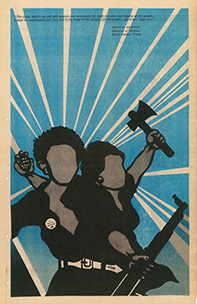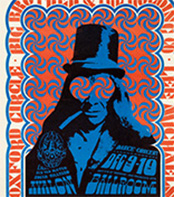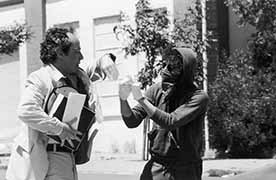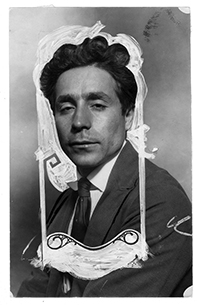







A picture and story gallery
By Hans Hs Winkler
Nov. 6, 2018 – Jan. 15, 2019
Opening, Nov.6., 19h (election day)
Studio im Hochhaus, Berlin, Lichtenberg (Former East-Berlin)
The exhibition in the studio im HOCHHAUS will feature an installation that focuses on works of 33 artists from the West Coast of the 20th century who, through their political commitment, became or could become pioneers for later generations.
Many of these actions survives through stories and myths that still are told today, and in addition to the products of the art market, they build another gallery of images and history.
As a protest against the accession of the United States in World War I, in 1916, the sculptor Beniamino Bufano cut off his right index finger and sent it to President Woodrow Wilson as a "symbolic trigger finger." In the 1950s, Victor Mikhail Arnautoff taught at Stanford University and championed an art that was determiuned to criticize the political system. His lithograph titled "DIX McSmear" was removed from an exhibition in San Francisco because it showed the then-Vice President Richard Nixon with a bank robber mask and his connection to the McCarthy era. On top of that, the government tried to initiate his dismissal. A key figure in the American "counterculture" in the 1950s/60s was Wally Bill Hedrick, who openly opposed American foreign policy and, in particular, the war in Vietnam. As an artistic contribution, he presented, for example, the US flag with the word "peace."
At the end of the 1960s, hundreds of thousands of people united in the face of the mass death of the Vietnam War: As Counter Culture, they attacked traditional American values, bourgeois morals and manners that were identified as the cause of war and racial discrimination.
This cultural revolution became the most influential opposition in the history of the United States to oppose capitalist America with a different, socialist or socialist social design.
In San Francisco, the "Diggers"declared the city a "free zone" and propagated the free distribution of clothing, food, medicines, and apartments. Along with the San Francisco "Mime Troupe"and the "Black Panthers,"they organized free breakfast for impoverished African American schoolchildren.
Emory Douglaswas responsible for the creative and visual impact of the Black Panthers. He implemented the ideas of the movement in the party newspaper, which had been published weekly since 1967, using drawings, paintings, and graphics, and organized wide-ranging and international presentations of his posters.
With the help of a "volunteer guerrilla army,"Robert "Robbie" Conal was also able to intervene in public space through weird and grotesque depictions of US politicians.
In 1978, artist Lowell Darling ran for California's governorship. His trademark was an oversized hand reminiscent of Mickey Mouse's, ready to shake hands, always ready to use. To confront him with the reality of politicians, a colleague, the performance artist Tony Labat abducted him. Disguised. Ultimately, the action failed and Tony Labat later described the action as "Kidnap Attempt“.
A reconstruction of the "Slant Step Show"can also be seen: An exhibition filled with stories and myths, of which there are "only" narratives and interviews by participating artists such as William Wiley, who addresses the necessary disappearance of "market" art.
The documentary "Weather Underground"(2002) can be seen as a media supplement. The Oscar-nominated film reports on the gradual radicalization of students during the Vietnam War.
The Weather Underground - USA 2002, 92 minutes Directed by Sam Green and Bill Siegel
In the 1960s and 1970s, the polarization of the political situation in the USA was acutely linked to the Vietnam War and the struggle for civil rights. In view of the seemingly ineffective methods of peaceful protest and resistance, militant groups formed within the protest movement, including the Weather Underground. The film illuminates the history and activities of the Weather Underground. Green and Siegel let activists talk about the past and show the illegal methods used by the FBI in the fight against the revolt. "The Weather Underground" was nominated for an Oscar in 2004 and is only the second film document on the US urban guerrilla.